TwinCore’s development team has deep expertise in a broad range of modern technologies, covering everything from dynamic front-end frameworks to robust back-end systems and cloud infrastructure. We leverage the Microsoft technology stack alongside modern JavaScript frameworks to deliver scalable, high-performance software solutions. Our stack is carefully chosen to ensure reliability, security, and maintainability in every project. We also stay up-to-date with evolving tools and best practices, so our clients benefit from both proven foundations and cutting-edge innovation.
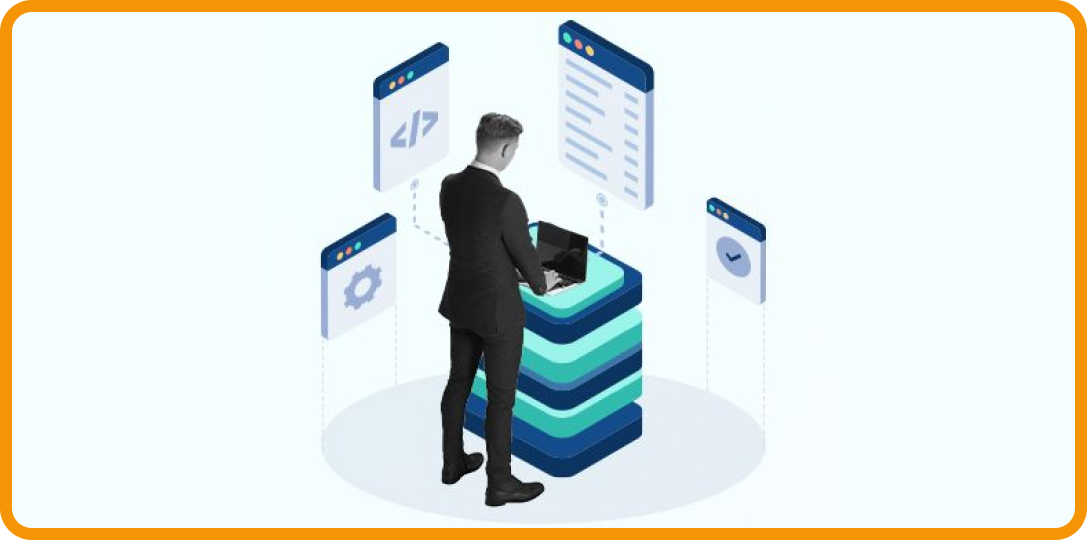
Web Development Technologies We Use
Web development only makes sense when it’s grounded in your product logic, not the hype cycle. Frameworks come and go — but your app has to load fast, scale well, and feel intuitive across every device. That’s why our choices aren’t trendy — they’re strategic.
Below are the core technologies we use for front-end web development, grouped by function:
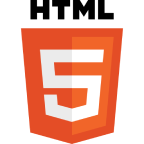

HTML & CSS
The foundational building blocks of the web, used in every project for semantic structure and responsive design. We follow best practices for accessibility, performance, and maintainability.


CSS Frameworks: Bootstrap, Tailwind CSS
Bootstrap provides a tried-and-tested grid and component system ideal for corporate apps and admin panels. Tailwind CSS enables utility-first styling for rapid prototyping and clean custom UI design — especially powerful when paired with React or Vue.



UI Component Libraries: Material UI, Ant Design, Chakra UI
We use production-grade UI libraries to accelerate frontend development while ensuring consistency in design systems. These libraries support accessibility (WCAG), responsiveness, and theming — all while maintaining clean code separation.



Design tools: Figma, InVision, Framer
TwinCore collaborates closely with clients and product teams using modern design tools. Figma is our primary platform for real-time design handoff and iteration; InVision supports interactive prototypes; Framer enables motion design and layout testing before implementation.
Front-End Development
Front-end development is all about crafting the user-facing side of applications - the part that clients and customers interact with directly. TwinCore uses modern, dynamic front-end frameworks to build engaging and responsive user interfaces. By focusing on intuitive design and seamless interactivity, we ensure the front-end experience is visually appealing and user-friendly on all devices. Our expertise in multiple frameworks means we can choose the best fit for each scenario while maintaining a consistently high standard of quality for the UI/UX.
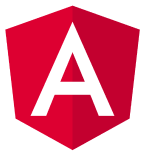
A powerful TypeScript-based framework for building rich single-page applications (SPAs). Angular’s structured architecture and robust tooling make it ideal for large-scale, enterprise-grade front ends that need long-term maintainability and scalability.

A popular JavaScript library for interactive UIs, known for its efficient virtual DOM and component-based architecture. React allows us to create fast, dynamic user interfaces with a vast ecosystem of libraries, which is great for projects that demand high interactivity and real-time updates on the client side.

Blazor
A cutting-edge front-end framework from Microsoft that enables development of interactive web UIs using C# and .NET, instead of JavaScript. Blazor (running via WebAssembly or server-side) allows TwinCore to share code between front-end and back-end, providing a seamless .NET full-stack approach. This is especially useful for clients who prefer a unified C# codebase across their application.

Vue.js
Vue.js is a progressive JavaScript framework we use for developing interactive and modular user interfaces. Its reactive data binding, single-file component architecture, and gentle learning curve make it ideal for fast-moving projects that demand high performance and flexibility — especially for small to mid-sized teams that want full control without excessive complexity.
Back-End Development
The back-end is the foundation of any application, responsible for core logic, database interactions, and overall system performance. At TwinCore, our back-end development centers around the Microsoft .NET ecosystem, which is renowned for its stability, security, and enterprise-level capabilities. By utilizing this robust platform, we build scalable server-side applications and APIs that can handle complex business processes and high user loads. Our back-end solutions emphasize security, performance, and clean architecture, ensuring that the behind-the-scenes functionality of your software is as solid as its front-end experience.

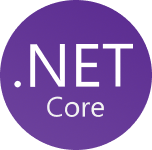
TwinCore specializes in back-end development using the Microsoft .NET platform, including the latest ASP.NET Core framework. We leverage ASP.NET MVC (Model-View-Controller) architecture to organize server-side code effectively and ASP.NET Web API to build RESTful services for seamless communication with front-end or third-party systems. The cross-platform nature of .NET Core allows us to deploy applications on Windows, Linux, or cloud environments with equal ease. Using .NET’s rich libraries and tooling, we deliver back-end systems that are performant, scalable, and maintainable for the long run.

SignalR (Real-Time)
For applications that require live data updates or instant client-server communication (such as chat applications, real-time dashboards, or collaborative tools), we incorporate SignalR. SignalR is a real-time messaging library in the .NET stack that enables persistent two-way connections between server and clients. By using SignalR, TwinCore can implement features like live notifications and updates, ensuring users receive information instantaneously without needing to refresh or request new data manually.

gRPC with .NET
For high-performance, low-latency communication between services, especially in distributed systems or microservice architectures, we use gRPC. Built on HTTP/2 and Protocol Buffers, gRPC allows for bi-directional streaming, multiplexing, and efficient payload serialization — all of which translate into faster data transfer and reduced bandwidth usage. TwinCore integrates gRPC within the .NET ecosystem to enable real-time service communication that’s both scalable and secure. Whether you're building internal APIs, cloud-native systems, or cross-platform clients, gRPC provides the speed and flexibility your architecture demands.

Entity Framework
To streamline database interactions without sacrificing performance, TwinCore relies on Entity Framework (EF), Microsoft's powerful ORM (Object-Relational Mapping) tool. EF allows our developers to work with data using .NET objects, abstracting away much of the SQL boilerplate while maintaining full control when needed. From migrations and schema management to query optimization and transaction handling, we use EF Core to build data layers that are robust, maintainable, and adaptable to complex relational structures. It's our go-to for building scalable data access strategies with minimal overhead.
Cloud Platforms
Modern software needs reliable and flexible hosting. TwinCore deploys and manages solutions on leading cloud platforms to ensure applications are scalable, highly available, and secure. Embracing a cloud-first approach allows us to take advantage of on-demand resources and global infrastructure, so our clients’ applications can grow and adapt as usage increases. We work primarily with two of the industry’s top cloud providers, which gives us the flexibility to tailor our deployments to the specific needs and preferences of each project.
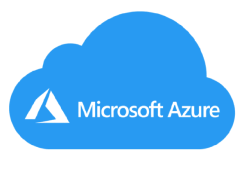
Microsoft Azure
As part of our Microsoft-centric stack, we frequently utilize Azure for cloud deployments. Azure offers a comprehensive set of cloud services and is an excellent choice for hosting .NET applications. We leverage Azure’s offerings-such as Azure App Services, Azure SQL Database, and Azure Functions-to build cloud-native solutions with ease. Using Azure ensures smooth integration with our .NET back-end components, and it provides enterprise-grade security, monitoring, and scalability out of the box. This means TwinCore can deploy applications that automatically scale to meet demand and maintain high uptime, all on a trusted Microsoft cloud platform.

Amazon Web Services (AWS)
TwinCore also has significant expertise with AWS, the world’s most broadly adopted cloud platform. AWS provides a vast array of services and global data centers, which we tap into to craft the right environment for our applications. Whether it’s using Amazon EC2 for flexible compute power, AWS Lambda for serverless functions, or Amazon S3 for reliable storage, we configure AWS resources to best support each solution. Our familiarity with AWS’s best practices and architecture ensures that applications running on AWS are optimized for performance, cost-efficiency, and security. By utilizing AWS, we can accommodate projects that require specific cloud tools or a multi-cloud strategy alongside Azure.
Databases
Data is at the heart of virtually every software application. TwinCore uses a mix of traditional relational databases and modern NoSQL databases to store, manage, and retrieve data effectively. We choose the database technology based on the project’s requirements - whether it needs strict consistency for structured data or flexibility and scalability for large volumes of unstructured data. By employing robust database solutions, we ensure that our applications can reliably handle everything from financial transactions to big data analytics, all while maintaining integrity and performance.
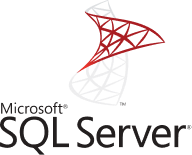

Microsoft SQL Server and Oracle
For applications that demand structured, relational data storage, TwinCore relies on proven enterprise-grade databases like MS SQL Server and Oracle. Similarly, Oracle Database is utilized in projects that require high-end scalability, security, and robust performance for mission-critical data. Our team’s expertise with SQL databases means we can design efficient schemas, optimize queries, and maintain your data with confidence and reliability.
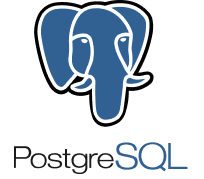
PostgreSQL
For systems that require advanced relational data handling, strong compliance support, and extensibility, we use PostgreSQL. Known for its strict adherence to SQL standards and powerful indexing options (GIN, GiST, BRIN), PostgreSQL is ideal for analytics-heavy platforms, geospatial systems, and applications that demand custom logic via stored procedures or triggers. TwinCore utilizes PostgreSQL to build secure, reliable, and future-ready backends with strong ACID guarantees.
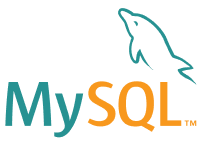
MySQL
A reliable choice for many web applications, MySQL offers speed, ease of use, and strong support for transactional operations. It’s often our go-to for eCommerce platforms, SaaS dashboards, and CMS-based solutions that require stable, high-performance querying under load. With support for both traditional engines like InnoDB and newer features like JSON columns and spatial indexes, we deploy MySQL to power data-rich applications with efficiency.

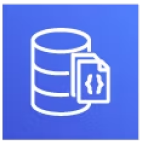
MongoDB & DocumentDB
When a project involves large-scale or non-relational data (for example, user-generated content, JSON documents, or IoT data), we turn to NoSQL solutions like MongoDB and DocumentDB. By using MongoDB and DocumentDB, we ensure our solutions can manage unstructured or semi-structured data efficiently while still delivering fast performance and flexibility.

CosmosDB
When building cloud-native applications that demand global distribution and multi-model data access, we turn to Azure CosmosDB. With support for document, graph, key-value, and columnar data models — along with low-latency, globally replicated storage — CosmosDB is ideal for high-throughput apps like IoT telemetry platforms, gaming backends, or distributed CRMs. TwinCore engineers leverage CosmosDB’s flexibility and scalability to deliver fast, planet-scale systems without the complexity of infrastructure management.
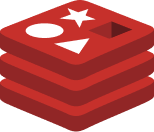
Redis
We integrate Redis for real-time caching, session storage, pub/sub messaging, and fast in-memory computations. Whether it's powering leaderboards, search indexing, or reducing database load in high-traffic environments, Redis helps us boost performance and responsiveness. Our team builds Redis-backed services with built-in failover and replication to ensure uptime even under heavy load.

AWS DynamoDB
For serverless applications and use cases where performance must scale instantly with demand, TwinCore uses Amazon DynamoDB. This fully managed NoSQL database offers single-digit millisecond latency, automatic partitioning, and flexible data modeling. We implement DynamoDB in architectures that benefit from on-demand scaling, such as mobile backends, personalization engines, or event-driven systems.
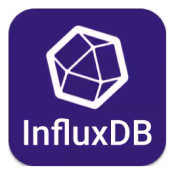
InfluxDB
Ideal for time-series data like sensor streams, performance metrics, or financial market feeds, InfluxDB is our preferred choice for IoT, monitoring, and analytics applications. With its purpose-built storage engine and native support for high-ingest workloads, InfluxDB allows us to capture and visualize vast volumes of timestamped data — enabling real-time dashboards, alerts, and decision automation at scale.
AI and Machine Learning Frameworks

TensorFlow
An open-source deep learning framework developed by Google. We use it for building neural networks in projects involving image recognition, NLP, and time-series prediction.

PyTorch
A flexible and developer-friendly framework from Meta, ideal for prototyping and production-grade ML models. Used in advanced R&D and custom AI pipelines.
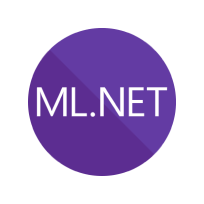
ML.NET
A Microsoft framework that enables integration of machine learning models directly into .NET applications. Ideal for predictive analytics and classification tasks in enterprise software.

OpenCV
A computer vision library used in projects requiring object detection, facial recognition, and video processing. TwinCore applies it in real-time image analysis and automation workflows.

Azure AI
A suite of cloud-based AI services by Microsoft, which we use for integrating language models, recommendation engines, and anomaly detection at scale.

Tesseract OCR
An open-source optical character recognition engine. Applied in projects requiring automated document scanning, data extraction, and ID verification.

Google Cloud Vision
Enables us to analyze images using Google’s pretrained models — detecting faces, objects, and text. Useful in eCommerce, security, and content moderation tools.
Full Text Search Engines

ElasticSearch
A distributed search engine that powers real-time, scalable full-text and faceted search. Ideal for eCommerce, analytics dashboards, and log processing.

OpenSearch
A fork of ElasticSearch maintained by AWS. We use it for search solutions where vendor neutrality and open-source licensing are key.
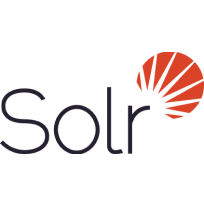
Apache Solr
A robust enterprise search platform built on Apache Lucene. Best suited for large-scale document indexing, legal archives, and academic repositories.

Lucene .NET
A C# port of the Lucene engine. Enables seamless integration of search features into .NET applications without relying on external services.
Message Queue and Event Streaming
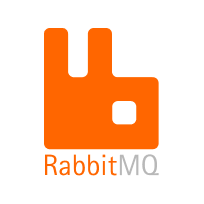
RabbitMQ
A lightweight and reliable message broker that supports multiple messaging protocols. Ideal for decoupling microservices and building resilient, asynchronous communication between systems.

Kafka
A high-throughput distributed event streaming platform, used for real-time analytics, log processing, and data pipelines. Perfect for high-volume use cases with low latency requirements.

Azure Service Bus
Microsoft’s enterprise-grade messaging system, enabling secure and scalable communication between services hosted across cloud or on-prem environments.

Amazon SQS
A fully managed message queuing service by AWS, which we use for offloading heavy workloads, buffering asynchronous jobs, and ensuring delivery guarantees.
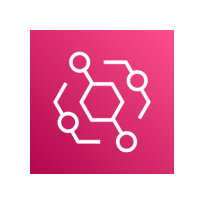
Amazon EventBridge
A serverless event bus service that enables integration between AWS services, SaaS apps, and custom code using an event-driven architecture.

Amazon Kinesis
Designed for real-time processing of streaming data at scale. We apply it in use cases like log ingestion, telemetry, and IoT analytics pipelines.

ZeroMQ
A high-performance asynchronous messaging library used in scenarios where low-latency and minimal footprint are critical, such as embedded systems or distributed trading systems.
CI/CD

Jenkins
One of the most widely adopted CI tools, used for automating build-test-deploy pipelines. We integrate Jenkins into complex workflows requiring fine-tuned orchestration.

Azure DevOps Pipelines
A cloud-native CI/CD service used in our Microsoft-centric stacks to manage build and release pipelines across hybrid environments.
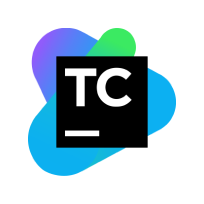
TeamCity
A robust CI server from JetBrains. Applied in enterprise projects where fine-grained control, custom scripting, and deep IDE integration are required.

GitHub Actions
Native to GitHub, this automation platform helps us define CI/CD pipelines directly in repositories. Ideal for streamlined DevOps and open-source contributions.

GitLab CI/CD
A complete CI/CD toolchain integrated into the GitLab ecosystem, enabling efficient deployment workflows from development to production.

Bitbucket Pipelines
A lightweight, YAML-based CI/CD solution tightly coupled with Bitbucket repositories. Used in projects that require simple, cloud-hosted delivery.

Travis CI
A cloud-based CI service well-suited for quick deployments and testing cycles, especially in open-source projects and proof-of-concept phases.
Quality Assurance and Testing

Selenium
An industry-standard tool for automated UI testing in web applications. We use Selenium to validate critical user flows across browsers, ensuring stable and bug-free releases.

Apache JMeter
A powerful tool for load and performance testing. Ideal for simulating high traffic and identifying bottlenecks in web services, APIs, or complex workflows.

Postman
A staple in our QA toolkit for API testing and automation. Postman helps validate endpoints, headers, and payloads to ensure integration reliability.

nUnit
A unit testing framework for .NET that we use extensively to enforce test-driven development (TDD) and catch regressions early in the pipeline.

xUnit
A modern unit testing library for .NET Core. We choose xUnit in projects requiring flexibility, cleaner syntax, and parallel test execution.
Containerization
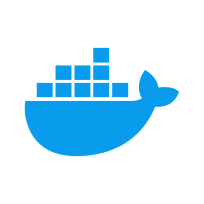
Docker
A key component in our deployment pipelines, Docker lets us package applications with their dependencies to run consistently across environments.
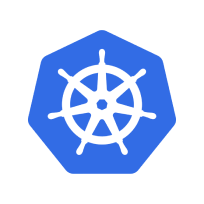
Kubernetes
Our go-to solution for orchestration of containers at scale. We use Kubernetes to manage microservice clusters, enable auto-scaling, and ensure high availability.

Amazon ECS
AWS’s container management service, preferred in cloud-native projects where deep integration with AWS services is required.
System Monitoring
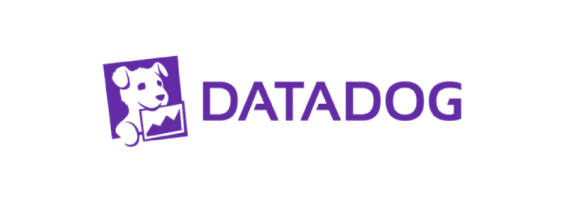
DataDog
A cloud-native observability platform that we use for tracking metrics, logs, and infrastructure events across distributed systems.

Prometheus
A leading open-source system monitoring tool, especially effective in Kubernetes-native environments for collecting real-time metrics.

Zabbix
Applied in on-premise or hybrid infrastructure for comprehensive monitoring of servers, networks, and databases.
Application Performance Monitoring (APM)

Elastic APM
Integrated into the Elastic Stack, we use this tool to trace transactions and identify slow queries or performance issues in real-time.

New Relic
A comprehensive APM solution we leverage for full-stack observability across back-end, front-end, and infrastructure layers.
Log Monitoring
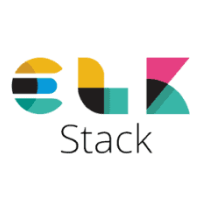
ELK Stack
A combination of Elasticsearch, Logstash, and Kibana used to centralize, search, and visualize logs. Ideal for debugging and proactive anomaly detection.
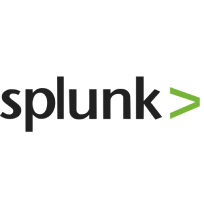
Splunk
Enterprise-grade log management and analysis platform. We use Splunk in high-scale systems where real-time insights and compliance-grade logging are required.
Full-Stack Integration and Reliability
Bringing together all layers of this technology stack, TwinCore acts as a true full-stack development partner. Our front-end and back-end systems are tightly integrated, allowing for smooth data flow and a cohesive architecture. We design every component – from the user interface down to the database – to work in harmony. This integrated approach means fewer compatibility issues, faster development cycles, and easier maintenance. Moreover, by using a consistent stack (largely centered on well-supported technologies like Angular/React and .NET/Azure), we minimize risk and ensure long-term support for the software we deliver.
Our typical architecture
We design technology stacks tailored to the complexity, scalability, and infrastructure needs of each project. Here's how we approach different architectures:
Lightweight Web Projects
High-Load, Real-Time Applications
Azure-Native Projects
AWS-Native Projects
For MVPs, dashboards, and standard business web apps, we rely on a proven full-stack setup that ensures rapid development and maintainability:
Frontend
HTML, CSS, Bootstrap or TailwindCSS
Frameworks
React or Angular
Back-end
ASP.NET Core + OpenAPI (Swagger)
Database
PostgreSQL or MySQL
ORM/Access
Entity Framework
This stack provides a fast track to launch while maintaining flexibility for future scaling or integrations.
When performance, concurrency, and real-time updates are key, we shift to a distributed microservice architecture:
Core
ASP.NET Core + OpenAPI
Messaging & Eventing
RabbitMQ or Kafka
Data
MongoDB, DynamoDB
Caching & Speed
Redis
Serverless/Scaling
AWS Lambda or Azure Functions
Monitoring & Observability
ELK Stack (ElasticSearch, Logstash, Kibana)
Containerization
Docker
Orchestration
Kubernetes (if needed)
This architecture ensures responsiveness and resilience, even under intensive workloads.
For enterprises and public sector solutions tied to the Microsoft ecosystem, we deliver robust Azure-native stacks:
Core
ASP.NET Core + Open API
Serverless
Azure Functions
Database
MS SQL
Messaging
Azure Service Bus
Monitoring
Azure Monitor, Application Insights
These projects benefit from native integration, security, and scalability within Azure Cloud.
For clients building within AWS, we offer a tightly integrated solution leveraging serverless and NoSQL services:
Core
ASP.NET Core + OpenAPI/Swagger
Serverless
AWS Lambda
Data Layer
DynamoDB or DocumentDB
Event-Driven Architecture
AWS EventBridge
This stack is ideal for applications requiring elasticity, high throughput, and minimal infrastructure overhead.

 LinkedIn
LinkedIn
 Twitter
Twitter
 Facebook
Facebook
 Youtube
Youtube

